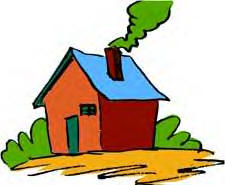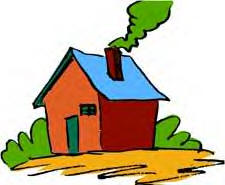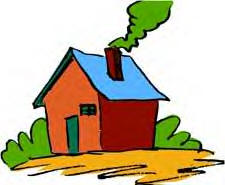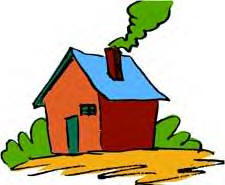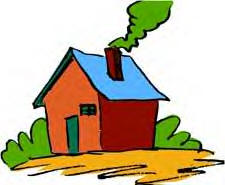Definition:
Your child has a fever if:
– Rectal, Ear, or Temporal Artery (TA) Temperature: 100.4°F (38.0°C) or higher
– Oral or Pacifier Temperature: 100°F (37.8°C) or higher
– Under the Arm (Axillary or Armpit) Temperature: 99°F (37.2°C) or higher
– Limitation: Ear (tympanic membrane) temperatures are not reliable before 6 months of age
– Temporal artery and skin infrared temperatures may be reliable in young infants
– Use this guideline if fever is your child’s only symptom
Causes:
* Main Cause: Colds and other viral infections
* Fever may be the only symptom for the first 24 hours (ie, viral fevers). The onset of symptoms (eg, runny nose, cough, diarrhea) are often delayed. In the case of roseola, fever may be the only symptom for 2 or 3 days.
* The cause of fever usually can’t be determined until other symptoms develop. That may take 24 hours.
* Bacterial infections (eg, strep throat, urinary tract infections) also cause fever
* Teething does not cause fever
Fever and Crying:
* Fever on its own shouldn’t cause much crying
* Frequent crying in a child with fever is caused by pain until proven otherwise
* Possible causes are ear infections, urinary tract infections, and sore throats
Normal Variation of Temperature:
* Rectal: A reading of 98.6°F (37°C) is just the average rectal temperature. It normally can change from 96.8°F (36°C) in the morning to a high of 100.3°F (37.9°C) in the late afternoon
* Oral: A reading of 97.6°F (36.5°C) is just the average oral temperature. It normally can change from a low of 95.8°F (35.5°C) in the morning to a high of 99.9°F (37.7°C) in the late afternoon.
Return to School: Your child can return to child care or school after the fever is gone and your child feels well enough to participate in normal activities.
 Call 911 Now (Your Child May Need an Ambulance) If:
Call 911 Now (Your Child May Need an Ambulance) If:
* Not moving or very weak
* Unresponsive or difficult to awaken
* Difficulty breathing with bluish lips
* Purple or blood-colored spots or dots on skin
Call Your Doctor Now (or in Alberta, Canada call 780-408-LINK) If:
* Your child looks or acts very sick
* Not alert when awake
* Any difficulty breathing
* Great difficulty swallowing fluids or saliva
* Child is confused (delirious) or has stiff neck or bulging soft spot
* Had a seizure with the fever
* Child is younger than 12 weeks with fever above 100.4°F (38.0°C) rectally (CAUTION: Do not give your baby any fever medicine before being seen)
* Fever above 104°F (40°C) and not improved 2 hours after fever medicine
* Very irritable (eg, inconsolable crying, cries when touched or moved)
* Won’t move an arm or leg normally
* Signs of dehydration (eg, very dry mouth, no urine in more than 8 hours)
* Burning or pain with urination
* Pain suspected
* Chronic disease (eg, sickle cell disease) or medication (eg, chemotherapy) that causes decreased immunity
Call Your Doctor Within 24 Hours (Between 9:00 am and 4:00 pm) If:
* You think your child needs to be seen
* Child 3 to 6 months of age with fever
* Child 6 to 24 months of age with fever present longer than 24 hours but no other symptoms (ie, no cold, cough, diarrhea, etc)
* Fever repeatedly above 104°F (40°C) despite fever medicine
* Fever returns after gone for longer than 24 hours
* Fever present for more than 3 days
Call Your Doctor During Weekday Office Hours If:
* You have other questions or concerns
Parent Care at Home If:
* Fever with no other symptoms and you don’t think your child needs to be seen
1. Reassurance: Presence of a fever means your child has an infection, usually caused by a virus. Most fevers are good for sick children and help the body fight infection. Use the following definitions to help put your child’s level of fever into perspective:
* 100°F to 102°F (37.8°C to 39°C): Low-Grade Fevers: Beneficial, desirable range
* 102°F to 104°F (39°C to 40°C): Average Fever: Beneficial
* Above 104°F (40°C): High Fever: Causes discomfort but harmless
* Above 106°F (41.1°C): Very High Fever: Important to bring it down
* Above 108°F (42.3°C): Dangerous Fever: Fever itself can cause brain damage
2. Treatment for All Fevers: Extra Fluids and Less Clothing:
* Give cold fluids orally in unlimited amounts (Reason: good hydration replaces sweat and improves heat loss from the skin)
* Dress in 1 layer of lightweight clothing and sleep with 1 light blanket (avoid bundling) (CAUTION: Overheated infants can’t undress themselves)
* For fevers 100°F to 102°F (37.8°C to 39°C), this is the only treatment needed (fever medicines are unnecessary)
3. Fever Medicine:
* Fevers only need to be treated with medicine if they cause discomfort. That usually means fevers above 102°F (39°C).
* Give acetaminophen (eg, Tylenol) or ibuprofen (eg, Advil)
* The goal of fever therapy is to bring the temperature down to a comfortable level. Remember, fever medicine usually lowers the fever by 2°F to 3°F (1°C to 1.5°C)
* Avoid aspirin (Reason: risk of Reye syndrome, a rare but serious brain disease)
4. Sponging:
* Note: sponging is optional for high fevers, not required
* Indication: May sponge if fever above 104°F (40°C) doesn’t come down with acetaminophen (eg, Tylenol) or ibuprofen (eg, Advil) (always give fever medicine first)
* How to Sponge: Use lukewarm water (85°F to 90°F) (29.4°C to 32.2°C). Do not use rubbing alcohol. Sponge for 20 to 30 minutes.
* If your child shivers or becomes cold, stop sponging or increase the water temperature.
5. Contagiousness: Your child can return to child care or school after the fever is gone and your child feels well enough to participate in normal activities.
6. Expected Course of Fever: Most fevers associated with viral illnesses fluctuate between 101°F and 104°F (38.4°C and 40°C) and last for 2 or 3 days.
7. Call Your Doctor If:
* Fever rises above 104°F (40°C) repeatedly
* Any fever occurs if your child is younger than 12 weeks
* Fever without a cause persists longer than 24 hours (if your child is younger than 2 years)
* Fever persists more than 3 days (72 hours)
*Your child becomes worse
Based on recommendations/advice in “My Child is Sick; Expert Advice for Managing Common Illnesses and Injuries”, 14th Edition, by Barton D. Schmitt

